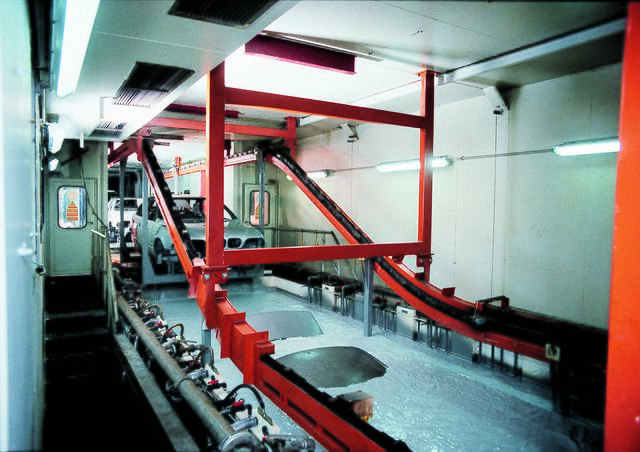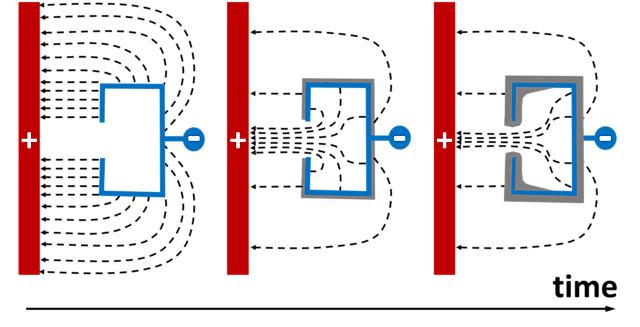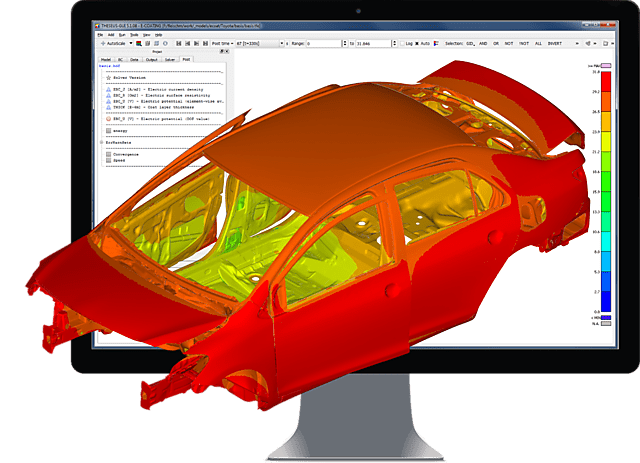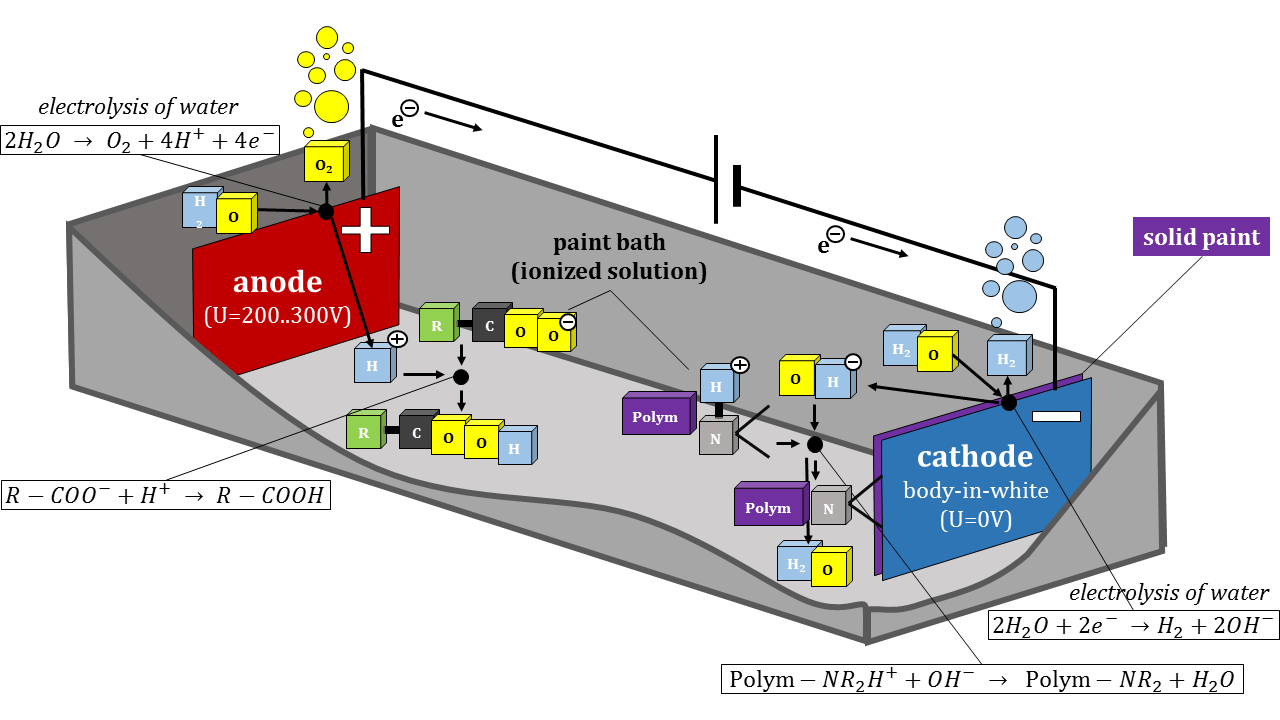
(Source: BMW Group PresseClub)
Electrophoretic Deposition Coating (EDC) or short E-Coating has become a de-facto standard process in car manufacturing. It is commonly used for depositing a high-quality anti-corrosion coating on the metallic surfaces of the body-in-white. In general this is one of the first steps in the paint shop process pipeline.
Advantages of E-coating over other variants of coating such as powder coating include:
- accomplishes uniform coating thickness even for complex parts
- more reliable coating even inside cavities
- high process speed and purity
- fully automated without human interaction
- high overall corrosion protection with best results in salt spray resistance tests
- less material per car body necessary for robust corrosion protection
- environment-friendly and secure by using non-flammable water-based coatings
THESEUS‑FE E-Coating is a cost-efficient way for verifying high-quality coating across the whole body-in-white, especially for problematic areas such as columns or sills. Used in series development it reduces the need for complex and costly measurements of numerous prototype car bodies. It allows for rapid analysis of various car body variants, e.g. with varying sizes and locations of drill holes applied to improve coating in problematic areas. The E-Coating module is complemented by our Oven module where we predict temperatures in the paint-drying ovens that are used in the following production phases.

Contributions of THESEUS‑FE E-Coating to your development process

Coating starts on outer areas. With increasing film thickness and resistivity there the electric current shifts into the inner areas. The final result is a uniform coat thickness.
Cathodic Electrodeposition Coating was traditionally considered a highly opaque process. Basic questions concerning the coating of a body-in-white an engineer would ask include:
- Is the corrosion protection layer applied uniformly and thickly enough over the whole car body?
- Are there any problem zones where the coat remains too thin or nonexistent?
- Is the placement and size of all holes good enough to allow sufficient current flow and coating deposition in all cavity areas?
- How much coat is applied on each car body in total?
In the past, all these points had to be evaluated with cost-intensive and tedious measurements of physical prototypes.
Using THESEUS‑FE E-Coating makes simulating and analyzing the coating process a breeze. Coat layer thicknesses are quickly available for all car body parts. Walking through the cavities and identifying problematic areas is dead easy. Variants of the same car model with different placements of holes can be done within just a few hours.
Get in contact with us and hear more about THESEUS‑FE E-Coating and related engineering services we have to offer.
THESEUS‑FE E-Coating features

Our E-Coating module is built on top of the core THESEUS‑FE tools and benefits from
- a feature rich graphical user interface for pre- and post-processing
- a highly efficient parallel numerical solver for doing the complex mathematical computations
- a general optimization tool for parameter calibration and sensitivity analyses
- utilities for exporting results to various other CAE post-processing software products
Specialized features mainly applicable for E-Coating include
- visualization of paint layer thickness and current intensities
- positioning of virtual measuring points in the model to conveniently compare simulation and measurement results
- special algorithms for modelling the coating process in enclosed cavities
- effective optimization algorithms for calibrating paint bath parameters
Have a look at the general THESEUS‑FE product overview pages for detailed information about the THESEUS‑FE package.
Visualization of Coating Layer Thickness
Once the paint and process parameters are known and the finite element mesh prepared, setting up an E-Coating simulation is a matter of minutes. Full visual feedback for the model definitions and simulation results is available at any time.
The core numerical solver accepts the finished E-Coating model and produces a solution for the coupled electrostatic field problem and transient paint layer thickness evolution equation. The simulation itself runs on multicore workstations with full body geometries and mesh sizes typically in the range of 10 to 50 million elements in a matter of hours.
The simulation results that are of most concern are the local paint layer thickness and the total quantity of coated material on the body. These results are easily accessed from the graphical user interface. Transparency effects and selection of threshold values are useful techniques for rapidly identifying any critical areas where the coating remains too thin to provide adequate corrosion protection.
User-provided paint bath parameters and calibrating the unknowns

For a simulation of the paint layer thickness the user needs to supply several paint and process parameters, including
- the conductivity of the paint solution and deposited layer
- the electrochemical equivalent
- the anode voltage over time
Since some of the process parameters, especially the solid paint layer conductivity, are not easily measured, our Optimizer module is regularly employed in practice to calibrate the model against measurements of paint thicknesses. The Optimizer module is included in the THESEUS‑FE E-Coating package and provides optimization methods for parameter calibration and sensitivity analyses. Both global optimization methods based on evolutionary algorithms and some local, derivative-free algorithms are available.
Please have a look at the general THESEUS‑FE product overview pages for detailed information about the THESEUS‑FE package and the Optimization package in particular.


